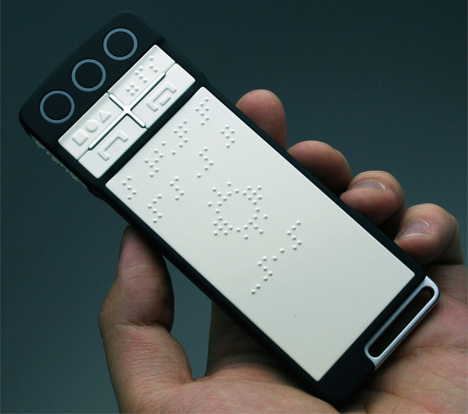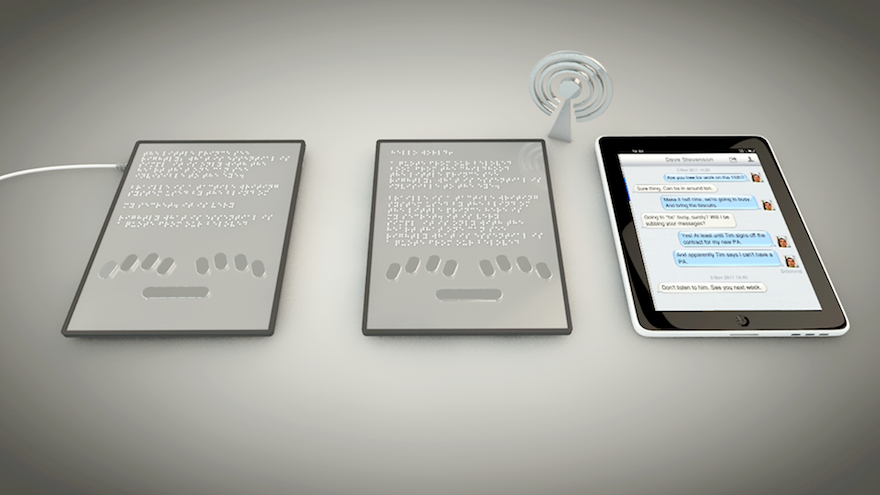Empowering Self-reliance With Assistive Modern Technology for the Blind
The integration of assistive modern technology into the lives of individuals with aesthetic problems represents a considerable development in promoting independence and self-sufficiency. From ingenious screen readers to advanced wise canes, these devices not only boost daily navigating and interaction yet likewise equip users to involve meaningfully in numerous facets of life. As we discover the myriad advantages and real-world applications of these innovations, it becomes crucial to examine the underlying elements that add to their performance and the potential for future growths in this crucial field.
Introduction of Assistive Innovation

The development of assistive modern technology is based in concepts of inclusivity and empowerment. Advancements in software application, hardware, and sensory enhancements give users with alternatives customized to their details needs. From screen readers that transform text to speech, to responsive tools that communicate details through touch, these tools change the method individuals involve with their environments.
Along with sensible applications, assistive technology fosters better social inclusion and involvement in numerous sectors, consisting of education and employment (Braille displays and notetakers). As study and advancement proceed to develop, the capacity for assistive innovation to additionally boost the lives of visually damaged individuals stays promising, paving the method for an extra fair society where every person can grow
Types of Assistive Instruments
A selection of assistive devices have arised to support people with visual problems, each developed to satisfy specific requirements and improve everyday performance. These devices vary from low-tech remedies to high-tech innovations, offering varied choices for customers.
Low-tech devices include magnifiers and large-print materials that help in reading and writing. Braille tools, such as Braille stylus pens and slates, enable responsive reading and communication. Positioning and mobility aids, like white canes, aid users browse their environment safely.
On the higher end of the range, digital magnification systems and display viewers use considerable assistance. Digital magnifiers permit customers to expand text and pictures on displays, while display readers transform electronic content right into synthesized speech, facilitating accessibility to information on computers and mobile phones.
Smartphone applications additionally play a vital function, providing functions like text recognition and navigation aid. Wearable innovation, such as wise glasses furnished with enhanced fact, is emerging as a promising tool to improve situational understanding.
Benefits of Assistive Technology
The assimilation of assistive modern technology considerably enhances the quality of life for people with visual disabilities. These innovations equip customers by advertising freedom, enabling them to navigate their settings a lot more properly and execute daily jobs with greater ease. As an example, screen visitors and magnification software allow individuals to gain access to digital details, fostering academic and specialist opportunities that might have previously best eye glasses run out reach.
Moreover, assistive gadgets such as clever walking sticks and general practitioners applications provide real-time navigation help, enhancing flexibility and safety and security. This boosted freedom not only improves self-worth yet likewise urges social interaction, permitting customers to take part even more fully in their neighborhoods.
Assistive modern technology also assists in communication, aiding users get in touch with others through voice recognition and text-to-speech applications. This ability is essential for keeping relationships and accessing crucial information.
Furthermore, the customization choices readily available with several assistive modern technologies guarantee that users can tailor tools to their particular needs, further improving use and performance. Generally, the benefits of assistive innovation for individuals with aesthetic problems are extensive, advertising a more comprehensive society where everybody can pursue their objectives and ambitions.
Study and Success Stories
Highlighting the transformative influence of assistive modern technology, countless case researches highlight exactly how people with visual problems have actually efficiently integrated these devices right into their lives. One engaging example entails an university student who used screen analysis software application to navigate online sources and academic products effectively. This technology not only promoted her education and learning but also enhanced her confidence in taking part in discussions and group jobs.
Another study features an expert who utilizes a smart device application designed for navigating and things acknowledgment. By using this app, he has gained back autonomy in both his personal and work atmospheres, permitting him to commute individually and engage with associates a lot more properly.
Additionally, a retiree shared her experience with braille e-readers, which allowed her to access a large you can find out more range of literary works and remain attached with her neighborhood with publication clubs.
These success stories underscore the crucial role of assistive technology in fostering independence, improving quality of life, and promoting social assimilation for individuals with aesthetic problems (Voice-activated assistive devices). By embracing these ingenious tools, customers can overcome difficulties and confiscate chances that contribute to their personal and specialist satisfaction

Future Fads in Assistive Innovation
Technology in assistive modern technology is positioned to redefine the landscape of support for individuals with visual impairments. Arising patterns emphasize the integration of expert system (AI) and device learning, which improve the performance of tools that aid with navigation and information ease of access. AI-driven applications are now qualified of analyzing visual information in real-time, enabling individuals to engage with their atmosphere much more independently.
In addition, the development of wearable modern technology is advancing quickly. Smart glasses geared up with increased fact (AR) can provide audio descriptions of surroundings, changing just how customers communicate with public areas. These gadgets not just advertise autonomy yet also foster social incorporation.
Additionally, the Net of Points (IoT) is making homes smarter, enabling seamless connection in between day-to-day home appliances and assistive tools. This connection empowers individuals by making it possible for voice-activated controls and computerized responses customized to specific demands.
Conclusion
Finally, assistive technology plays a pivotal role in equipping people with visual problems by enhancing their freedom and involvement with their surroundings. The diverse variety of applications and gadgets offered not only facilitates navigation and interaction however also promotes social assimilation and opportunities for professional and personal read this article growth. As improvements continue in this field, the capacity for improving the lifestyle for those with visual impairments will expand, promoting better autonomy and empowerment.
